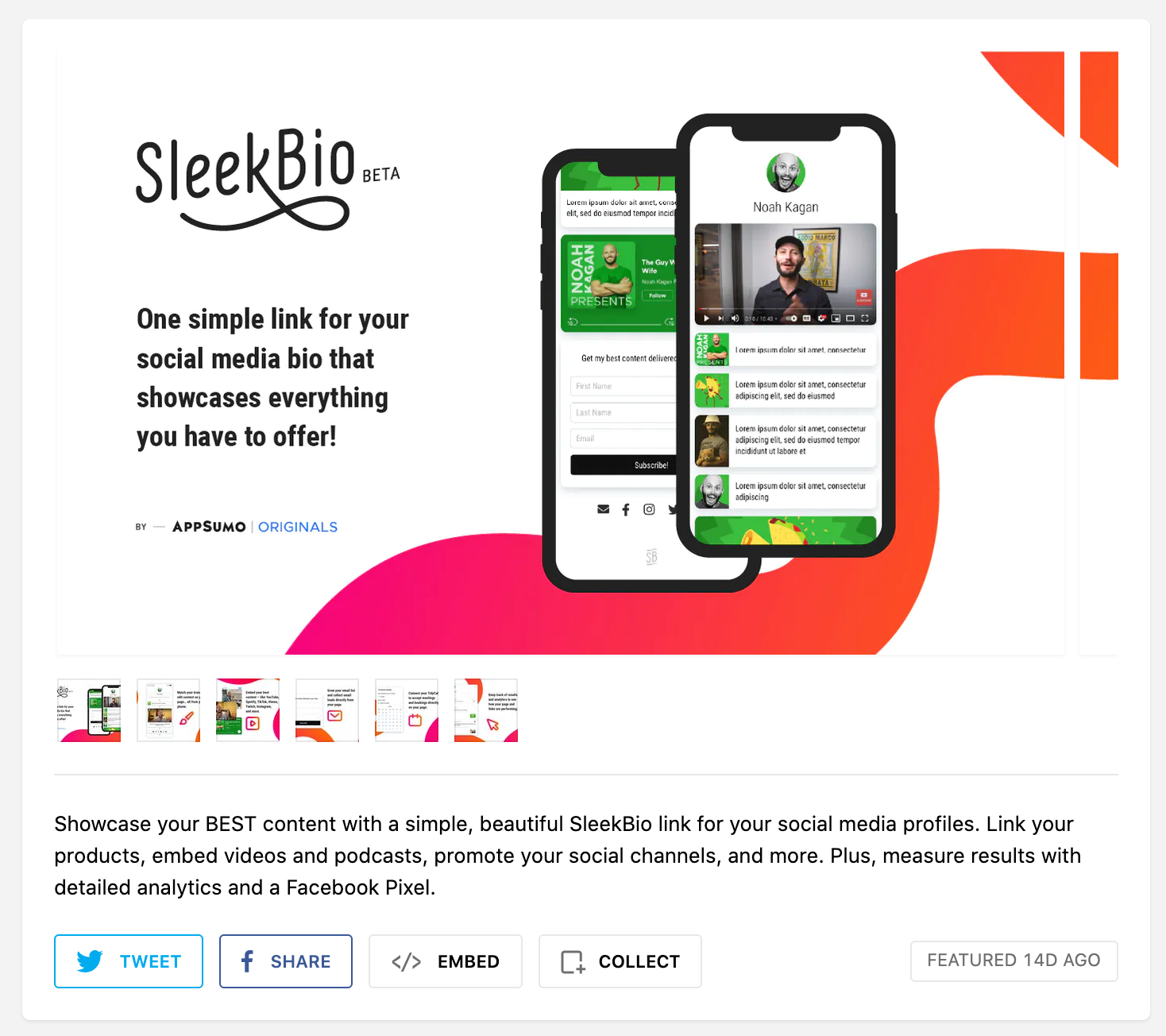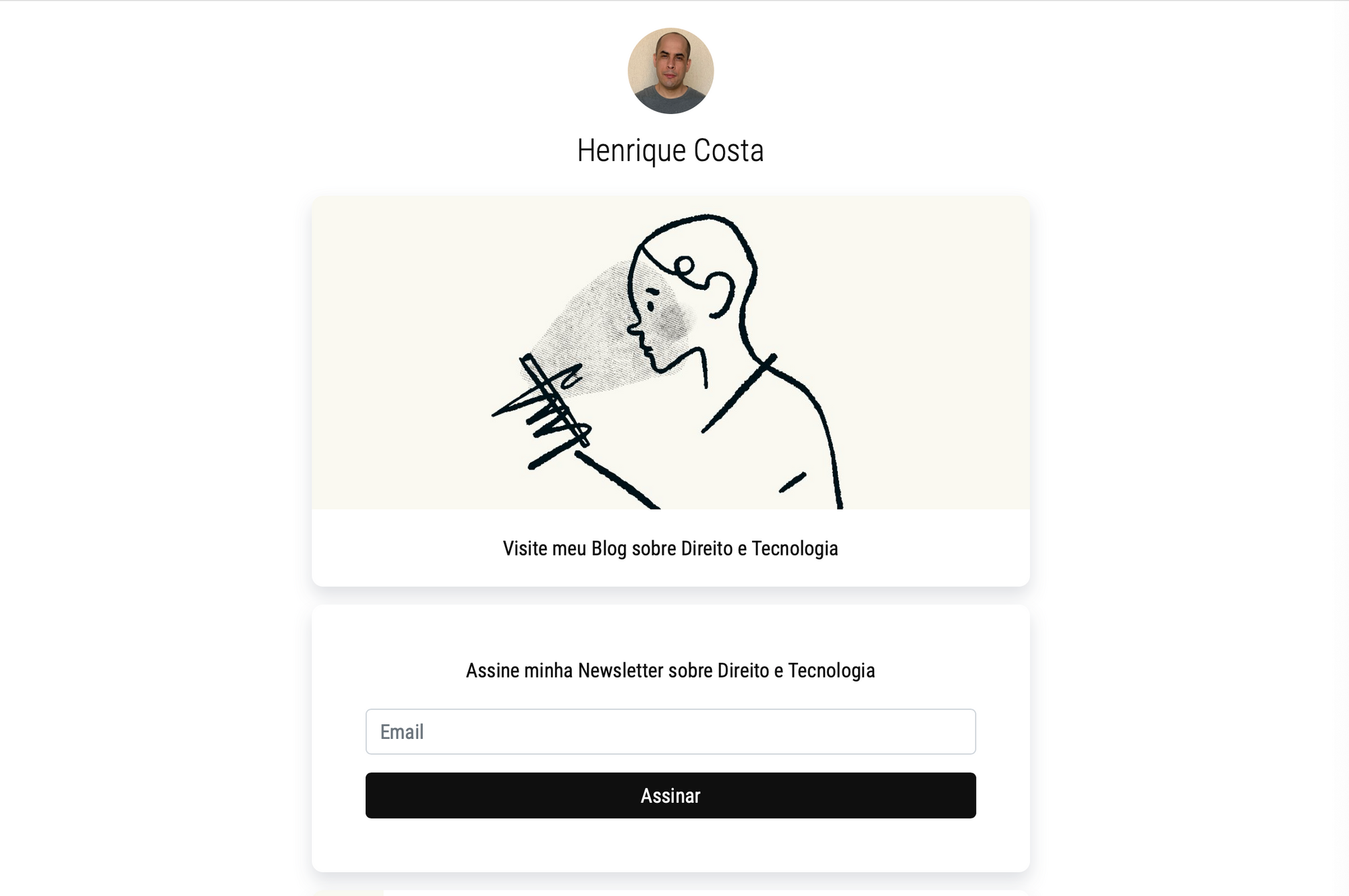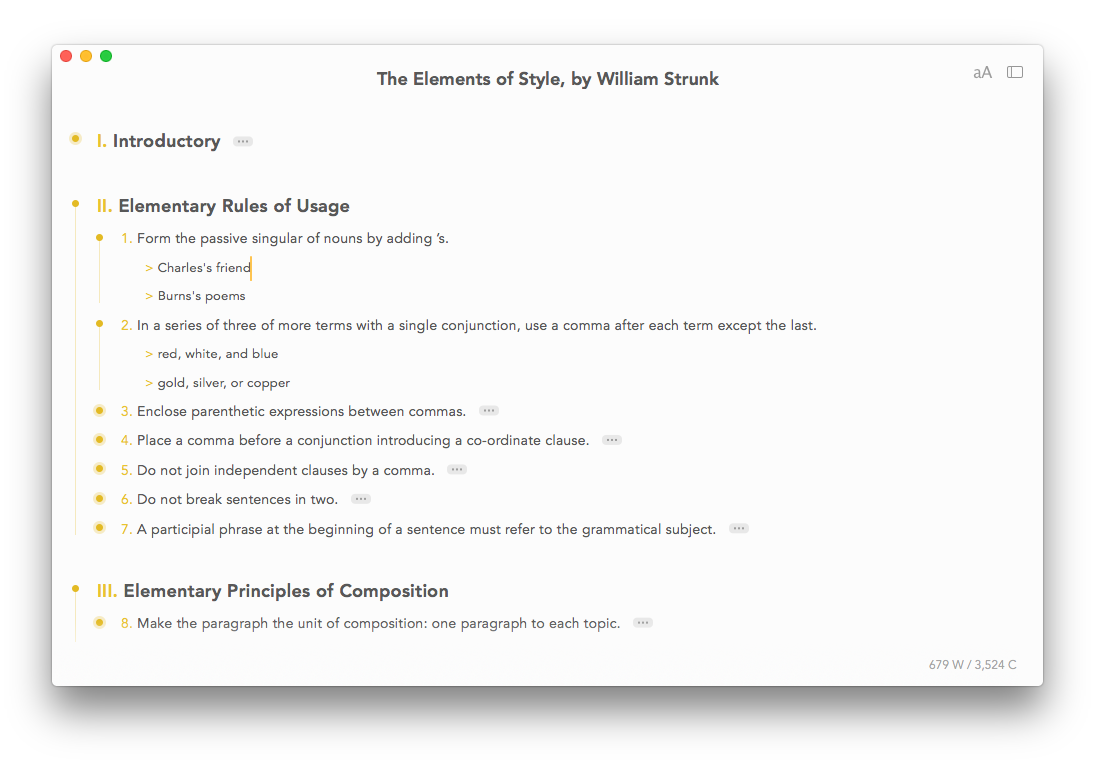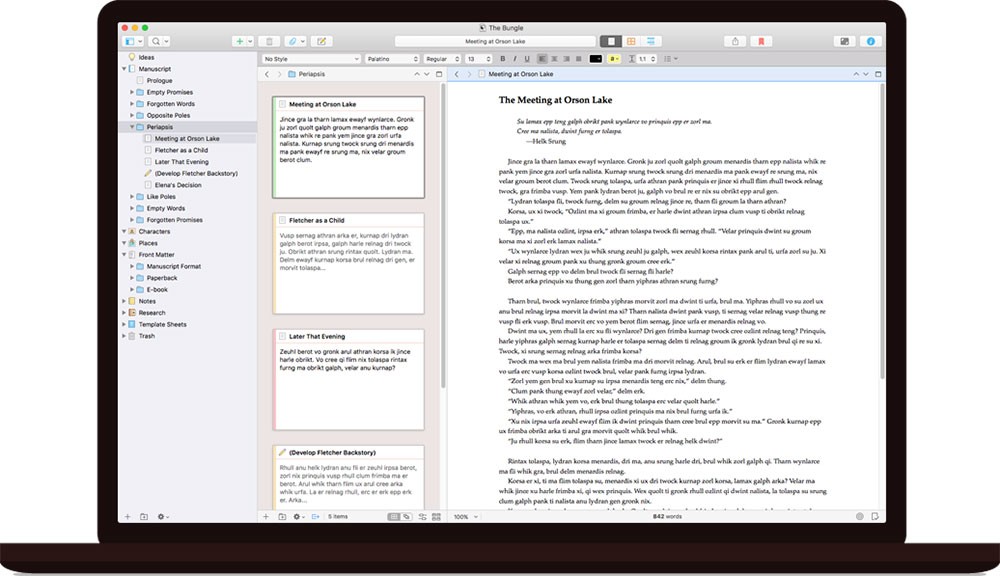productivity
Gamification in the classroom: beyond Kahoot!
Comparison of paid and free apps for playful activities in the classroom.
I recently tested the app CrowdParty , which aims to be a gamification alternative to Kahoot! , a true edtech giant. CrowdParty's proposal is to help break the ice between participants in virtual and face-to-face meetings, through electronic games that invite socializing (in the world of work) and learning (in the academic environment).
These characteristics define the market for tools for interacting with the public. This assumes that you already have a presentation in progress, as tools like CrowdParty are just an accessory to communication . It is very important to highlight this feature, as it follows that the remote user will need two screens or even two devices to interact, one to follow the meeting and the other to play properly.
The classic games of this type of tool are trivia and riddles. But CrowdParty already has some variations of these games, whose content can be customized. In fact, despite having some advanced settings, The platform is still in the early stages of development , not having some basic tools, such as interface translation. That's why any direct comparison with Kahoot! it would be unfair.
In terms of price, CrowdParty is free for up to 10 players, which is compatible with other free plans on the market. Plans for 50 players start at USD 20/month, which I consider a high value:

CrowdParty is not the only alternative to Kahoot!, and there are several apps on the market that intend to exploit opportunities left by the segment leader. Or AhaSlides , for example, has a free plan with different types of questions, in addition to offering a slide tool focused on teachers. The price is competitive, costing USD 5/month for up to 50 players.
If you need a free solution for up to 25 people, the Poll Everywhere seems to be the only option. It is an option with a more sober look than the others. The GimKit , despite being a small company, focuses on corporate plans for schools, starting at USD 1,000/year/school. Still within the educational market, with the difference of being more oriented to the activity of applying tests and being more sober, there is the ClassMaker .
There is also the Quizizz , which is perhaps the most direct competitor to Kahoot!, given its huge library of templates. Despite this large collection, the types of questions available are limited. Its price is USD 19/month for the 100-player plan. Or Slido , in turn, is an option focused on the corporate market , much more than in education. It has the great advantage of a free plan with up to 100 players, but limited to three polls:
In conclusion, there are several alternatives when it comes to engaging your audience in person or virtually. Some are more corporate solutions and others are more educational, although generally the apps cater to both.
If you're looking for a free plan, the choice will depend on the size of your audience . Although it has limitations, Slido is the only one that allows up to 100 participants. Next, Poll Everywhere is also the only one to allow 25 participants in the free plan. The other apps offer free plans only for small groups, which for me would be insufficient.
The original Mac application for organizing applications (called Launch) replicates the same system as the cell phone for exposing all installed programs. Basically, Launch displays a list of icons that can be grouped into sets. And the very way of moving the icons is similar to what you do on a cell phone. Although this simplicity has a good side, it can become quite limiting as well.
Since, until recently, I had a lot of apps installed on my Mac (many of which I just tested and should have uninstalled by now), I got to the point where I had trouble finding the programs by name. That's when I decided to install a program to manage Launch itself and things started to get out of control. So, more than once, I lost the organization made and this discouraged me from maintaining the solution.
But now I've just found one that seems to me to be a pretty neat solution, called Overflow 3 (USD 14.95). In my view, Overflow is a kind of bookmark bar for your apps . After all, you only put the apps you want in Overflow. And when you take them out of there, they don't get unstuck, so Overflow is an additional layer of organization.
Although my comparison is always with Launch, Overflow also stands as an alternative to the Dock itself, which are the noblest shortcuts you can have for applications. In addition, Overflow has a good search for files, folders, images, and links. That is, all these types of content can be placed on Overflow.
This sum of features allowed me to organize native apps and links to web apps (increasingly frequent) in the same environment. In practice, I no longer stop to think about whether I really have that application installed on my computer or if the shortcut will lead to an address in the browser. And, as all this is done with the help of tabs that can identify application groups, the activation of programs has become much faster.
I imagine getting lost in your apps is an uncommon problem as people tend to have a reduced number of programs installed. But if you, like me, are always testing new possibilities, you may end up falling into the same trap. At least now you know that you have Overflow so you don't get lost forever on your Mac's screen.
Apps to complement courses offered by Teams
How to solve the weaknesses of the Microsoft solution for remote courses?
We know Teams is the solution to Digital Office from Microsoft. But we also know that its video tool is widely used for conferences, which includes recording online classes. So it's no surprise that many of us use Teams to deliver courses remotely.
Despite its popularity, I've always found Teams to have some weaknesses for this use. One of the central points for me is the absence of a good evaluation tool. Fortunately, this point is now completely solved with the use of Akindi. This is my post on how I apply my objective tests with the help of this tool.

The other tricky issue for is that Teams doesn't have a good notification center . With that in mind, I started to organize my courses with the help of Ghost, so it was possible to create a kind of newsletter for students. My courses then started to look like this:

Although it was an advance to adopt this layout, I ended up concluding that I wouldn't need to keep a Ghost just to have a newsletter. This could be done more easily with something in the style of Revue or the Substack . These solutions for messaging a community are really worth a look at as they can be a good addition to Teams.
It's just that these solutions, in addition to being used to send emails, are great for organizing subscribers, which is something that Teams never intended to do. In my specific case, even if the students were registered in Teams, often the registered email was not the most used by them. Because of this, it was very important to create a management tool that would serve the creation of the email list with the current preference addresses of the students.
Taking this into account, I ended up opting for the Sendfox . It is the newsletter solution of the AppSumo Originals , which is a line of products with great free plans or with cost-effective options. In addition, AppSumo itself solves Sendfox's main limitation, which is that the Landing page For email list promotion is not very customizable. The solution to this is called Sleekbio and is also a free offer from the same company.
In fact, Sleekbio was created so that you have a personal page, not one Landing page business, which is why you are expected to have only one address and to connect it with your social networks. Despite this, nothing prevents the creation of new accounts on Sleekbio , taking advantage of their excellent platform to create pages that are not just an address for your bio. Its integration with AppSumo's tools is completely transparent and makes a great impression.
In short, I need a solution to apply objective tests ( Akindi ). I also need a solution for managing emails and notifications ( Sendfox ). Finally, I need all of this to be integrated into a single address, a kind of landing page ( Sleekbio ).
The downside is that these tools, because they are commercial, do not allow me to have a customized web address. However, this is not so important for my use and I prefer to know that I can count on these services for free or at a very friendly price, in which case I decide to get the most out of each of them. Today the free plans suit me and I think they can suit you too.
Reorganizing my courses in Teams
Teams isn't great at anything. But everyone knows how to use it and that's enough for me.
Right when the first semester of remote classes began, I published a post here describing which tools I chose to manage the courses I teach at the Faculty of Law of UnB. I need to recognize that they were not the best choices.
I started using Teams, which is the tool offered by the organization I work for. I don't fall in love with Teams, but I don't think anyone dies. Good or bad, everyone has used the app and knows how things are organized.
Particularly, I hate Teams notifications, because to this day I have not been able to prevent it from sending me an email replicating the notifications already displayed within the application. On the other hand, the video tool is very good and it turned out that this was the only feature I really used.

And what were my biggest mistakes in choosing a multi-app solution?
The first mistake was underestimating the work required to keep a course up to date at the level I intended. Throughout the semester, I realized that the work was much bigger than I imagined and I was unable to fulfill what I promised.
The second mistake was thinking that I could use an information organization model (which is now the rule in customer support) for the organization of an academic course. I ended up realizing that to reach all students you have to change the way your course is displayed as little as possible. Well, if they're the users and they want something that's familiar to them, innovating here is a risk.
The third mistake was assuming that students would use an additional commenting tool to talk to me and each other. That really didn't happen. Not even the students used a resource to talk only to me. So, I was not even successful in the forum, nor in the chat. I ended up giving in to WhatsApp, which was my biggest fear.
My fourth mistake was using a free email sending tool. I confess that I didn't understand what happened right. But the fact is that Mailgun did not have a very good message delivery rate and that Ghost's operation for this type of interaction is not risk-free. Some emails simply did not arrive or were identified as spam.
But I didn't just have mistakes and some things worked very well.
Maintaining a real-time feedback tool was very interesting, as I confirmed the strengths of my course proposal. On the other hand, negative feedback did not come through this channel. I imagine that the student avoids giving negative feedback to his professor until the end of the semester.
Publishing mind maps with the content was a very positive point. Here I didn't have much of a surprise, as it's something I've always known, even before using a feedback tool. In general, any summarized and visual organization is very successful with students.
Finally, another point that worked well - perhaps because it is complementary to mind maps - was the podcast I created. I made a micro-podcast, recorded on Anchor and published on Spotify. It was an interesting experience, as it is very practical to produce content in this way.
That's it. These were my mistakes and successes. From now on, I will use Teams as the main application to teach classes. It's not that Teams is excellent at anything. It's just a platform that everyone knows and on which I can post my recorded classes.
In the next post I will explain which three apps I will continue to use in addition to Teams in the semester that is about to begin.
See you soon!
PS: Here is the post with the promised update:

In search of the perfect "link in bio"
How to integrate all the streets social networks from a single link on your profile page?
Since Instagram became one of the main social networks (perhaps the main one under a certain focus), the expression "link in bio" has become widely used. This stems from a limitation of Instagram, which practically does not allow the posting of a clickable link. After all, you only have one pinned link on your profile page.
To get around this limitation, a class of tools was created to manage the "link in bio" and the Linktree is the most famous of them. But personally, I don't like the result, since it's just a list with tons of links. With this, it is reasonable to assume that many people give up clicking on the link they initially wanted, simply because the decision to choose is too tiring.
The most appropriate solution always seemed to me to be creating a personal landing page , which would be nothing more than a hub to distribute traffic directed to the "link in bio". Of course, there are a thousand ways to create a landing page, but creating and managing it pose challenges that can be significant. Even if you know how to create and manage this page, it would inevitably consume some time.
That's why I was so happy when I found a service called Sleekbio . It is a recently launched tool that aims to demonstrate your digital portfolio in a very personal way. It is a tool for individuals only and I think this differentiates the space of companies well. Legal entities would need an institutional page, which is incompatible with Sleekbio's purpose.

It was very quick to get my page online. In the end, on an unnecessary whim, I ended up choosing to buy the app. The amount is USD 19.00 in a single payment and Just the fact that it is no longer a subscription is already a great advantage . When you pay, it continues to display a smaller brand in the footer, so it is not a fully customizable product.
The result of the publication is a Page that gets straight to the point , identifying what is most important to you at the moment:

At the end, you should put a footer indicating your social networks - which is half the battle for those who need a solution to integrate different profiles. As I said, notice that they continue to display the tool's initials (SB) at the bottom of your page, even on the paid plan:

In short, that's it. It couldn't be easier .
Before joining, you may want to consider that it is an application from the family of AppSumo Originals . That's why it's only natural that they will launch paid integrations to expand features, for example: newsletter, sweepstakes, and appointment schedules.
Be that as it may, if AppSumo stays true to the proposal, we will always see solutions that are not the best, but are always a cost-effective alternative. And that's just what is enough most of the time.
Comparison: Notion vs. Notion Traditional knowledge bases
How to choose the best FAQ and manual solution for a small project?
Notion's proposal
I have already dealt here with How to organize a personal knowledge base from text notes. And, as the name implies, it is not a basis for sharing this information. After all, if you want to share something, you need that information to be hosted on some internet service.
I also recently announced that the Notion now has a plan that allows you to share just that kind of information, therefore offering more than a personal knowledge base . This means that you can use Notion's free plan to host a knowledge base (with FAQs, tutorials, manuals, etc.), as long as we're talking about a small project.


After all, how does Notion compare to other knowledge base tools?
While Notion is a tool for organizing content (generically speaking), the alternatives created to support projects (regardless of their size) are marked by the workflow they intend to serve.
Support Software
A good comparison category for our purpose is made up of tools aimed at serving the public, a category also known as help desk. Or Zendesk it is an example, because, although it is focused on receiving tickets, it offers a knowledge base at a relatively affordable price (USD 5/month).
In fact, you have to pay for the support ticket management tool, and you end up getting access to the knowledge base, called Guide. If you are interested in this combination, it can be an alternative. But, for me, unfortunately the price is still an issue.

Zendesk leads us to two similar comparisons, one more expensive and one cheaper. The most expensive is the Intercom (USD 99/month, i.e. prohibitive) and the cheapest is the Freshdesk , which has a very good free plan. The only downside to Freshdesk is that you can only customize the look and feel of your support portal on the most expensive plans ($49/month).
In summary, good support software also offers, among countless options, a knowledge base. You can take advantage of this, insofar as These tools can have billing strategies that allow the use of a knowledge base for free or at an affordable price.
This opportunity is due to the fact that support portals are increasingly offering complex services, which include: service automation through bots, integration of the knowledge base with chat, support from various channels (including Whatsapp, phone and social networks), etc. Since companies tend to charge for these sophisticated services, the knowledge base itself may end up being offered for free .
Documentation Software
Another category of tools that offers knowledge bases is documentation software. The perspective is a little different from that offered by the support solutions, as they are unlikely to include the automation functionalities previously listed. This does not mean that they are cheap, as they are complex tools in their own way.
Or Gitbook It has a very interesting free plan. The product is spectacular, but it still doesn't have Portuguese translation . In the mid-range price range, there is the Confluence ($10/month). Among the most expensive and unfeasible options for my budget, the ReadMe has plans starting at USD 99/month.

In fact, as the documentation world intends to serve developers, it is possible to find a number of free or very cheap tools. But, as the audience is developers, you will possibly need to be a developer to install and manage programs like Sphinx , MkDocs , Docusaurus or Read the Docs .
Preparing the completion...
The knowledge base format has a very useful structure. Because it is independent of a timeline, It is an organization option that is very complementary to a blog for instance. But it can also work autonomously. I myself, if I had known this in the past, would have used the knowledge base approach to solve some demands that ended up not being well met by a blog.
It may be then that you, like me, need a knowledge base much more than a blog to solve your current demands. As an example, more recently, corporate blogs have become repositories of use cases, while knowledge bases are much more versatile, and can include: tutorials, FAQs, documentation, etc.
The question we keep coming back to is: what is the problem you are looking to solve? A blog is the ideal tool for posts that tell a short story or present an opinion. A knowledge base, in turn, is the ideal tool for posts that convey instructions of any kind. So basically, you need to know if you want to tell a story or if you want to spread instructions.
And if you want to disseminate instructions, what is the best way to do it?
... Closing the conclusion
In terms of options between tools, the knowledge bases offered by support solutions are more accessible. The knowledge bases offered by documentation solutions are more expensive.
The reason seems to be that the strategy of support solutions is to try to sell added services (not necessarily the knowledge base, but, for example, its integration with a chat); while documentation solutions serve only this purpose. The consequence is that they have to charge for the only solution they sell, even if they don't necessarily offer a much superior experience.
Or Notion It emerges as a new alternative, as it is not a support solution or a knowledge base per se. In fact, Notion is a productivity tool (free for personal use) that allows you to share knowledge bases, making it the ideal option for small projects that don't have a budget.
If you have a generous budget, there's a good chance you've made it to the end of this post. In addition, I have the impression that the more specific solutions I have listed here (such as the Gitbook ) did not have their applications translated into Portuguese. In other words, in this case, money does not solve it completely, as the field of "Documentation as a Service" seems to be offered only by foreign companies with little interest in Brazil.
Notes vs. Notes App Knowledge Base: Which One Is Best?
Comparison between promising applications and traditional alternatives for your knowledge management.
Documents vs. databases
I've talked in previous posts about how I use notes and outlines to facilitate my writing process. I also dealt with the text editors that I use in different circumstances, always comparing available Mac options :


And today I want to take care of a different subject, related to how to store and retrieve the information you generate.
Many people are totally passive about building their knowledge base, letting information accumulate on their Whatsapp, Gmail, etc. As a result, they don't even know where to look when they need information. Nothing could be more predictable, because chat and email are not knowledge bases .
Strictly speaking, knowledge base applications such as DEVONthink , Yojimbo and EagleFiler , collect, organize, and enable the recovery of documents from your computer. This type of app is quite expensive and doesn't fit into my workflow. The main reason is that I've been abandoning the organization of documents and folders to concentrate databases that, eventually, point to documents.
The problem of documents
Let's start with a problem that can be quite critical: the search in several pdfs. I don't think it's necessary to join such an expensive knowledge base as DEVONthink just to perform this function. If this is really a core problem for you, I recommend using the PDF Search (as it is less expensive, USD 40). And, as I recall, the Mendeley It would be a free option for that.
But what I really wonder is if that would be necessary for most people. I suppose the search from the Mac itself (Spotlight) is enough for almost everyone who is silent, because the search in pdfs is native . So this is a point that seems to me to have been overcome.
If you - like me - write in markdown, you will have native knowledge bases of text editors. Even if this were not the case, markdown is plain text that is easily retrievable anyway. By the way, this is one of the reasons not to write in Word, making choices for open standards. So, so far, we have covered the documents you have received, written or found on the internet.
The problem of grades
Now we come to the point that really interests me, which is the grades . There are several note-taking apps that work as true textual knowledge bases. A good example is the Bear , whose organization is done through tags and a search engine.
And there is also a new generation of note-taking apps, including Roam Research It seems to be the most hyped. It is a very sophisticated proposal, focused on building links between notes :

Unfortunately, Roam Resarch did not accept my invitation to be a beta user. But the app has an open demo that allows you to conclude what it is all about. The concept of the app is to be an outline with "backlinks". That is, it creates links between different points in the knowledge base, allowing you to go back and forth between them. This proposal contrasts with Obsidian , which is a note-taking app with "backlinks".
In addition to this difference, Obsidian works with a local folder on your computer (not on a remote server), in which you must keep files in markdown. With this choice, you own your data.

It really is a brave proposition from a business point of view, since You won't have to pay any subscription to use the app . Apparently, only optional encryption, version control, hosting, publishing, and collaborative editing services will be paid.
With all this, Obsidian seemed superior to Roam Research in all points, including in terms of interface. Here's an example of how you can split your screen by opening the same document in multiple windows and at different points. Really, it seems like a very promising app to me .

Conclusion
Traditional knowledge bases are organized to manage documents. While I recognize the value of this approach, I get better results organizing notes at a more granular level. That's why I recommend using a notes app to build your knowledge base and, currently, or Obsidian It seems to me the best alternative .
I understand, however, that my approach may have been too radical , as it requires working with files in markdown and without a sync or hosting service. If this is your case, you may want to opt for a more convenient application, with tag-centric organization (such as Bear ) or with a richer interface (as in the case of Notion ).
In addition to these options with good free plans, there are numerous apps: Archbee , Confluence , Gitbook and Nuclino , among others. With these terms in hand, you'll be able to do your own Google search. But I think the trend is that these tools will meet the demands of enterprise wikis much more than a personal knowledge base.
And when it comes to personal knowledge base, it's much more important to have speed and depth in relationships than a rich interface. In this case, really, beauty does not set a table.
PS: If you're as excited as I am, watch Matt Laker's video on the subject and he'll confirm everything I'm saying here:
Grades vs. Notes Outline: what kind of person are you in the world of productivity?
Several ways to organize the activities to support your reading and writing.
Grades vs. Notes Outline
A note is a fragment of text with no hierarchical structure. An outline, on the other hand, is a Sequence of notes with hierarchical structure .
Generally, a note-taking app relies on a good search engine, since the organization of content does not rely on nested structures. It is a universal approach to the organization and that needs no explanation, because every mobile phone comes with a good enough notes app . Everyone has seen (and possibly used) a note-taking app.
If you need to be presented with an outline, it has looks like an index. Its main characteristic is the nodes that define the hierarchy of its content (see Outlinely ):

And, for comparison, a notes app looks like this, displaying a list of non-hierarchical texts (see Bear ):

Author or reader?
For me, notes are often part of a process of authorship. That is, they tend to be more on the active side of the writing process. Outline, on the other hand, is a tool for consumption, for summary, not to be confused with a tool for authorship. Thus, it tends to be on the passive side, being a useful tool for the reader. But, as I said, that's just my view.
Each user should use these tools as they make the most sense for their workflow. In my case, for example, If I am going to expose someone's text, I will possibly make an outline as preparation for the presentation . On the other hand, if I am going to write a text, I will possibly take notes of other texts, while I write my own text.
Along these lines, it is quite unusual to find an outline tool aimed at the public that writes long texts. For example, the Workflowy , a highly acclaimed option for creating outlines, has only two use cases: lists and notes. Or Dynalist , another well-known option, proposes to be an organizer in which you can nest information and connect the dots.

Similarly, outline tool options tend to be a solution for lists, planning, projects, etc. This profile is confirmed by the proposals of the Checkvist and the Moo.do . They almost invariably cover the needs for the elaboration of short texts .
But, back to the notes, the proposal of writing long texts from them is present in great applications. Or Scrivener He is the one who most assumes this mission, as he merges his notes into a larger text. Its layout mirrors precisely this workflow, starting from titles, passing through notes and finally arriving at long text.

Text or all?
As you can see, this is my use of notes and outlines. By the way, it is a very particular use and I have already taken care of the subject in a post in the past:

I am aware that, for people who do not have writing as the main activity of their lives, the great references for notes are the Evernote and the OneNote .
I see Evernote as a repository of your day-to-day information: favorite pages, clipper for later reading, pdfs, and scanned documents in general. The program aims to be that great digital basket , and typed notes are just one species of them. Being a generalist, Evernote is not my option.

OneNote is also not my option because it has a very similar proposal to Evernote. These apps consider notes as any type of media, Especially drawings and pictures . To me that's not important. Here's how OneNote looks:

Conclusion
I take notes when I'm writing something. Although I recognize the power of Bear, I have preferred to take notes directly in the text editor where I will write my own text. My preference is for some editor in markdown, maybe more the iA Writer than any other throughout this year.
I draw up outlines when I'm reading something. For a long time, I used the Dynalist for that and it was a great choice. It is certainly among my favorite programs, especially because of its powerful search. However, more recently, this demand of mine has also been met by pdf annotation tools, such as MarginNote . But that's a subject for another post.
What about you? How do you take notes when reading and writing?
